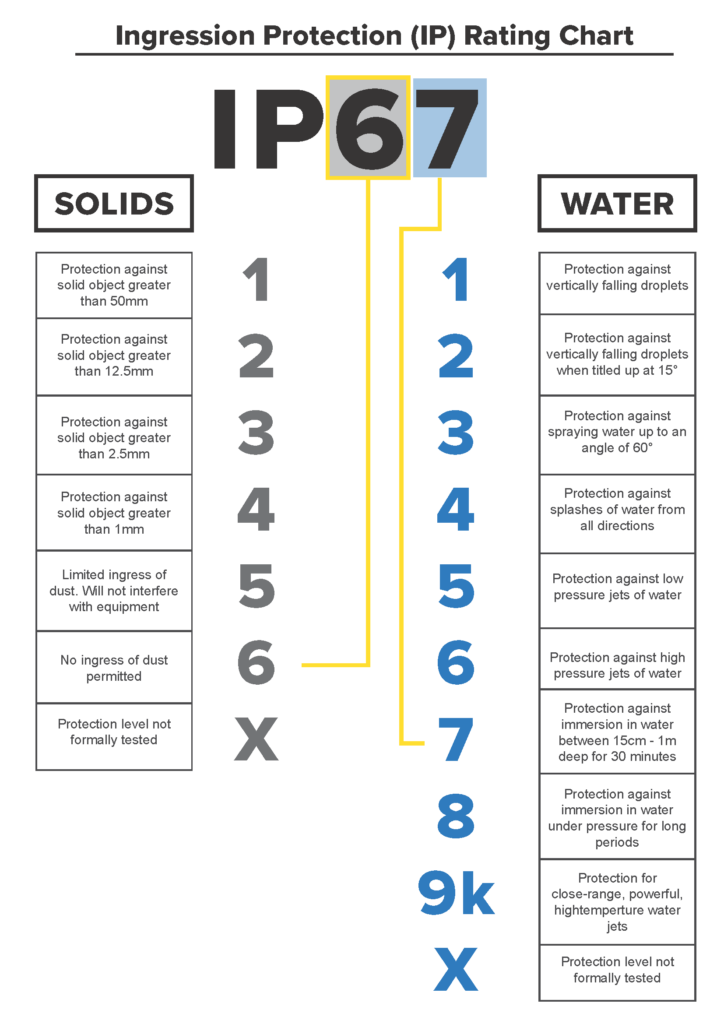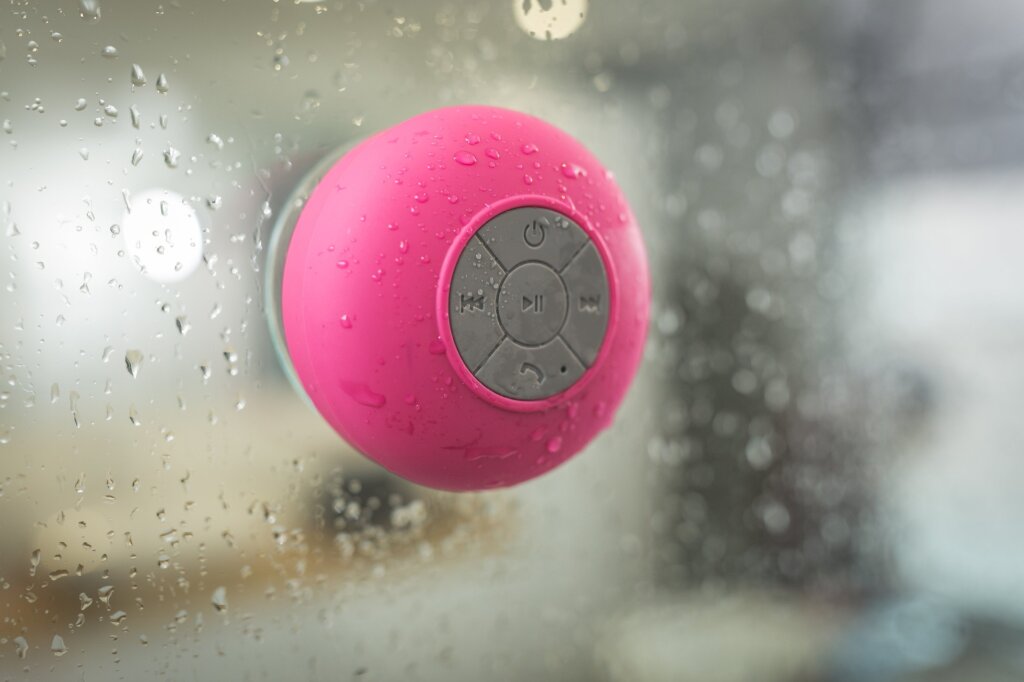IP Ratings Explained
Ingress Protection ratings, also known as IP ratings, define the sealing effectiveness of any component or product against the ingress of foreign objects such as dust and water. When designing an HMI interface it is important to consider the desired IP rating of the final product and ensure the HMI design can meet the required specification.
How do you measure IP Rating?
The IP Rating is made up of two digits, the first digit is between 0-6, and is for level of protection against solids, such as dust. The second digit sets a rating inside the enclosure against harmful ingress of water, this number is between 0-9.
This can be seen in the chart below:

While you might encounter slight variations in IP ratings depending on where in the world you’re buying from, they are regulated in most regions. In the UK, IP codes are assigned in accordance with British standard BS EN 60529:1992. In Europe, they are classified with IEC standard 60509:1989, and internationally they conform to EN 60529 certification.
Most keypads offer protection between IP57 – 65. Careful design of both Membrane keypads and rubber silicone keypads is required to ensure specific IP rating are met.
Why is it important to have an IP Rating system?
By having this universal IP Rating system, it gives the user the confidence that products can withstand certain foreign bodies and moisture. Manufacturers specifying the level of protection the product is expected to deliver, giving a more precise definition to the customer, and a clear understanding of each products abilities and limitations in different environments.
When a product is marketed as ‘waterproof’ it would fall under the rating IP65, IP66, IP67 and IP68. If you have any questions around the IP Rating when designing a product it is always better to clarify with us.
Applications and Industries
To incorporate the correct ingression protection rating into an interface design it is important that the engineer is fully aware of the intended environment of the application. For example, underwater applications would need to have a high IP Rating to meet requirements. Other examples of areas that need to have a high IP Rating due to exposure to dust, condensation, steam, and corrosion include:
- Marine
- Industrial machinery plants
- Aviation
- Outdoor kiosks
- Food and beverage manufacturing plants

Get in touch
At Diamond HMI we can help you create an interface solution with the desired IP Rating based on product intended use. It is important that when choosing an IP protection rating for an electronic product to fully consider the potential exposure types and resistant protection you might need for any electronic components or systems, as ingress from either particulates or moisture of any kind can often result in damage or increase hazard risk. For more information call 01477 5052060 or use the contact form below.
